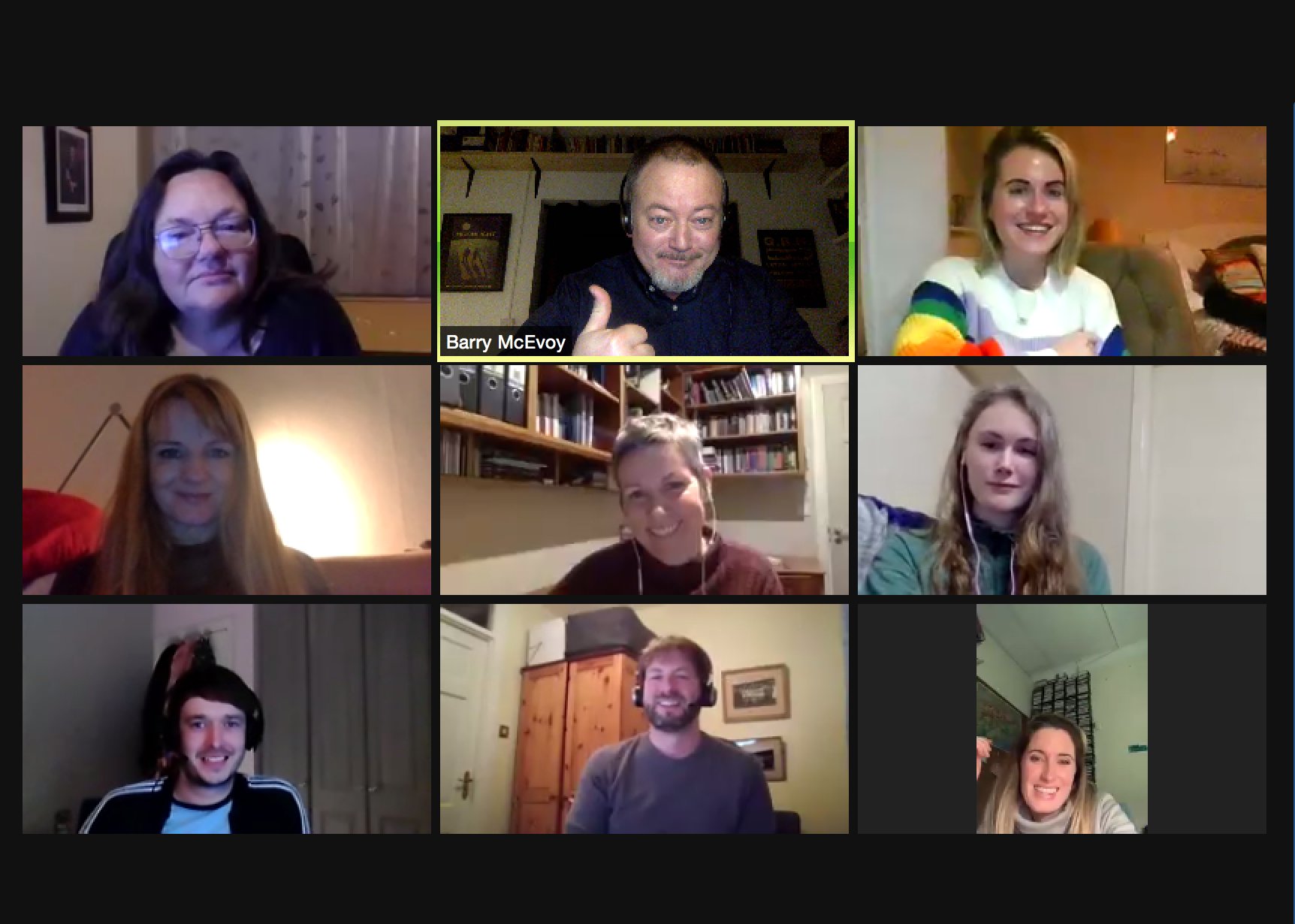By Kathleen Warner Yeates, Director, Flying Turtle Productions
This past year we have spent a LOT of time facilitating and creating projects on ZOOM. It seems that a little bit over a year ago, there was no ZOOM on our radar. The idea of working remotely was only happening on occasion as warranted, and online learning seemed uninspiring to us. As a techno-phobe, the last thing that I wanted to create was an online class.
A lot has changed in a year!
People are using ZOOM for corporate and artistic meetings, events and courses. While we may miss face-to-face connections, we are recognizing that by working online we can instantly collaborate internationally; we can save on commuting time; we can conserve economic and ecological resources; and we can discover NEW ways of working.
ZOOM is here to stay as an option in the creative and corporate industries, so it is time to dive in!
What makes a dynamic ZOOM class? We can always watch a passive webinar on a subject, but a live class needs to be ALIVE! As with all strong facilitation, there needs to be interaction between the facilitator and students, and also, possibly, between the student participants themselves.
This means a few key things:
1. CLASSSIZE needs to be limited to an amount that is suitable for the subject and allows for live interaction beyond messages in the chat bar! Our classes are mostly limited to 10 students maximum because of the nature of what we teach (corporate training, embodied language learning and creative industries.) Some other types of classes may be workable in groups of 20 or more, depending on the subject being offered. The key balance is to keep all participants active and inspired.
2. The LENGTH of the class session can vary. Most of us know what it is like to have screen burnout and to be stuck in a chair for hours. In general, if the class is highly interactive, a 2 to 2.5 hour class will fly by. If it is a passive learning experience, then even 30 minutes can feel too long.
3. GET TECH HELP: Technology needs to be up to speed for the facilitator and student participants. Our guidelines stipulate that a student must work from a laptop or tablet, rather than a phone devise since the screen and capability are different in a phone, which may interfere with the various ways of engaging on ZOOM. Of course, a camera and microphone are essential as well as a steady internet source. Most of the times, things go smoothly, but there can be a huge variety of devices and technical issues, so the best way to address any of these issues is by taking advantage of the extensive help provided by ZOOM on their website as well as on Youtube. Start here: https://support.zoom.us/hc/en-us/categories/200101697
4. The LIVE LOCATION of all of the participants should be suitable for the subject being taught and allow for full physical and vocal engagement if needed. In our classes you may be asked to get up out of your chair and make noises, since we cover voice work in many of our courses. The room being used for the “classroom” must allow for complete and uninterrupted participation.
5. MAKE SOME NOISE! In this era of isolation, the simple act of speaking out loud is one step towards a “psycho-physical” engagement. This means that the student is speaking and hearing, both, which improves memory retention and helps the student to relax and improve cognitive ability. This can be in the form of a Q & A or any full group interaction. We know that ZOOM has a built-in “vocal over-ride”, so the first in and loudest voice cancels out the others.It is important that the facilitator assist with engaging each participant and make space for the quiet ones! Additionally, the mute button is an essential tool to manage ambient sound and keep the focus.
6. CREATE ENGAGING CONTENT AND USE THE TOOLS
The ZOOM classroom requires a lot more preparation and imagination in order to keep people engaged. Can the facilitator prepare in a new way to inspire themselves and the students, by re-visiting and re-invigorating the deeper intention and objective of the session? Can the facilitator/presenter use all of the tools available on ZOOM to provide a varied way of engaging? There are options for break-out rooms in order to work simultaneously in sub-groups, a chat bar option for questions and comments, a file attachment option, the mute button, the hide non-video participants option to focus viewing for short portions of the session, the “reactions” buttons such as “raise hand” or “clap”, and, yes, there is even the now infamous “filter” button! (See “I am not a cat” https://www.youtube.com/watch?v=lGOofzZOyl8)
But most importantly, the facilitator must ask themselves has the class content been deeply investigated in order to provide a purposeful and stimulating learning experience using all of the tools available?
Our ZOOM classes have been designed to keep you completely engaged. We have observed others around the world, explored new teaching practices, and re-imagined the way that we facilitate so that each class will keep you challenged and inspired. Our courses offered include Public Speaking, Learn English through Drama, Screenwriting, Customised Corporate Training and a wide variety of Performing Arts courses for all levels of experience. In addition to courses, we have collaborated on live theatre projects, feature films and new media performances with creatives all over the world.
Until we can gather safely we will continue collaborating, learning and building connections on ZOOM. Have a look at our home page for the latest options on course listings at www.flyingturtleproductions.com We hope to see you soon!












